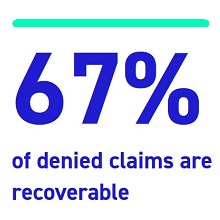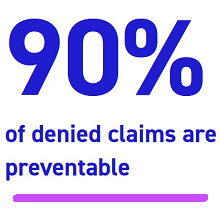Preparing for the Appeal (Inpatient)Posted on June 25, 2020 When a denial is received, the first step in the denial and appeal management process is to gather and review all documents related to the denial such as the denial letter, the medical record, and the bill. It is a good idea to ensure that the denied reimbursement matches the submitted bill. A review of documents can immediately determine discrepancies, such as if the payer missed a rebill. There would be no reason to waste resources composing an appeal if the claim has already been resubmitted. This review can also highlight issues such as a payer that uses an outdated or proprietary payment grouper. For example, Medicaid may be behind on the version of grouper in use to calculate payment. The facility should be aware and bill for the appropriate grouper. If not, the facility should correct the grouper within the facilities system. Often correct codes can calculate differently dependent upon the grouper, i.e., something could affect the SOI (severity of illness for an APR-DRG) in one version of the grouper but not have the same effect in another version. The same would apply to MS-DRG, where a diagnosis may count as a CC/MCC in one version and not the other. The use of the appropriate grouper has nothing to do with the accuracy of the codes billed. Based on the rationale of the payer’s denial, decide if this will be strictly a coding appeal. Every organization is different. Many will approach appeals from a dual approach (both clinically and coding). It is often hard to tell the cause of the denial by the payer’s references or lack thereof. It will be up to the facility to decide what the best approach is and could be contingent upon staff availability. Other factors considered could be historical payer responses as related to the denied code. For example, does the payer tend to elaborate their rationale later one way or the other, which might provide insight into the current denial? Speaking of references, the appeal writer should verify payer references. Is the reference accurate? Was the reference paraphrased? Is the reference applicable to the dates of services for your particular claim? Payer auditors should be using the Official Coding Guidelines and or AHA Hospital Coding Clinics as reference. Once you have considered the items discussed above, then review the medical record to determine the correctness of the coding. |




